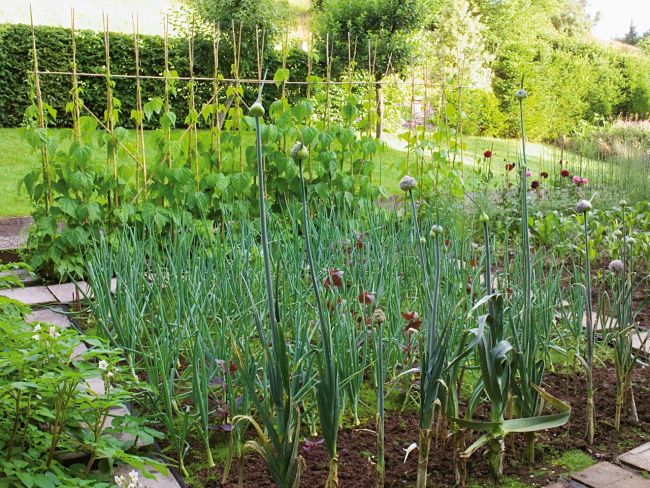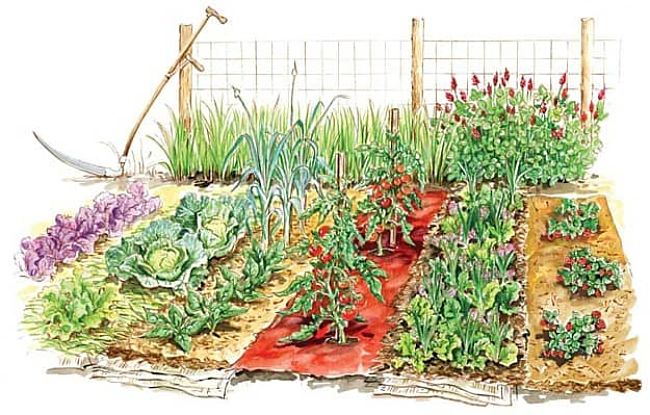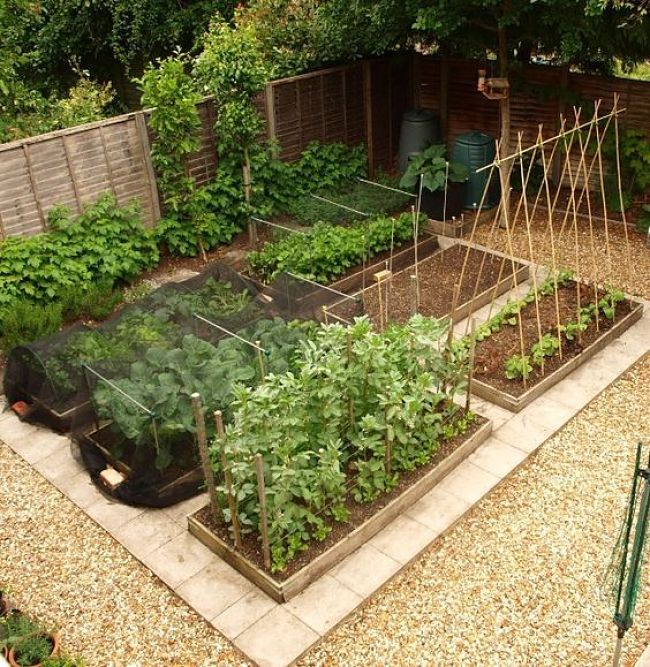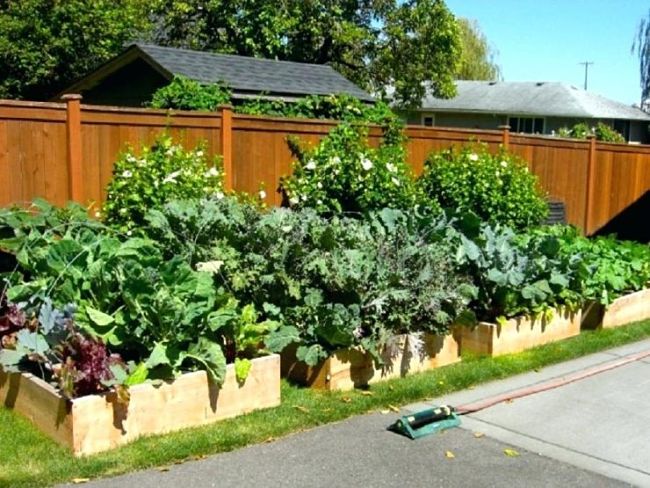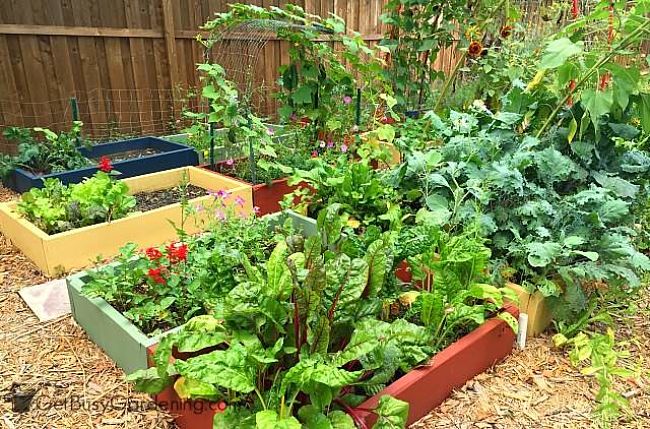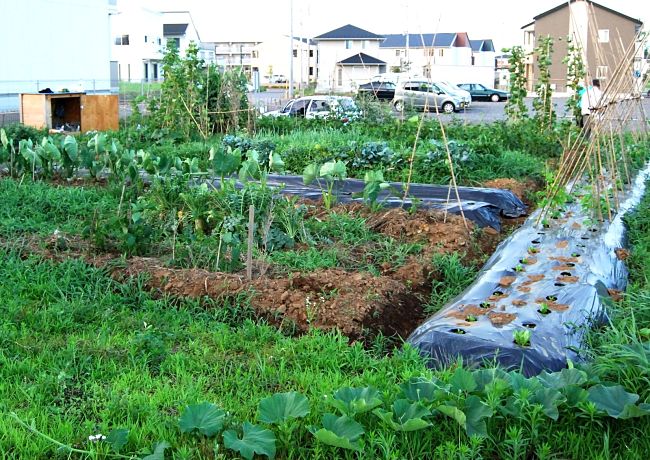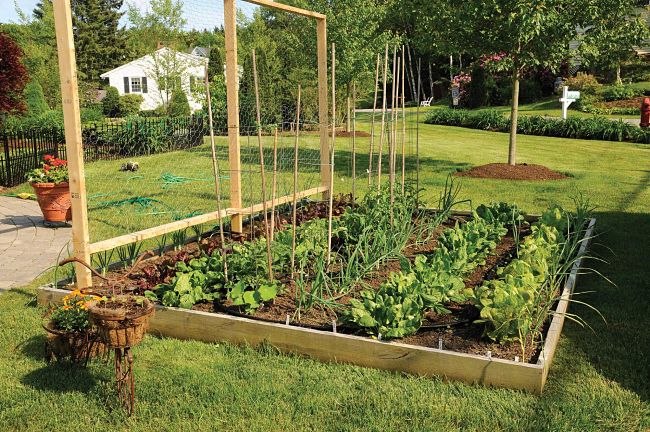Vegetable Garden Planner - Layout, Design, Plans for Small Home Gardens
If you have grown vegetables before you may have experienced the results of poor planning. You may have had a glut of lettuce,
had zucchini piling up and turning to huge monsters. Yet you may have run short of many other things you had grown.
With some better planning, designing and layout, you and your family, can enjoy having lots of fun, eating healthy
home grown produce and reducing your grocery bills. You will be able to eat and enjoy a variety of delicious homegrown
vegetables picked fresh from your garden.
At first planning a garden, big enough and diverse enough to feed
your family can appear to be too hard. How many tomato plants should you plant to feed a family of four? How many carrots,
onions, cauliflower, etc. Fortunately there are some good guidelines and the table shown below summarises how much of each
type of vegetable to plant. The table is presented in term of row length and number of plants
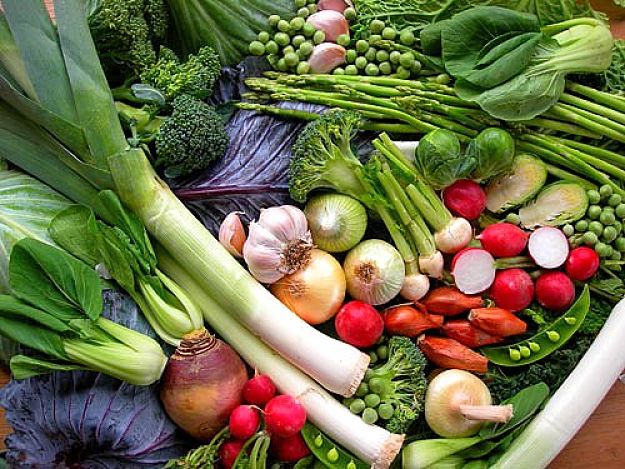
What Vegetables Should You Plant
The choice of vegetables depends on your individual or family preferences, the season, the space available and the soil and water.
Don't waste garden space producing wonderful crops of plants that no on in the family will eat.
Cater for your demand and don't plant all the seed at once. Sow seed successively into the space allocated so that you have an on-going supply.
This will takes some experience and you also need to know how long various vegetables take to grow and seasonal requirements.
Plants such tomatoes, broccoli, capsicums, lettuce,beans, peas, carrots and zucchini are all easy to grow and are always needed in the kitchen rewarding. You don't necessarily need a huge space as you can grow things in layers.
Permaculture is built on the principle of layers for garden design. Sustainable Permaculture gardens provide continuous yields for minimum effort once developed. These priciples can be applied to home gardens.
A well designed vegetable garden can be very attractive in your backyard and offer hours of enjoyment for the whole family.
It can also save a lot of money.
There are some excellent websites that provide guidelines for designing various types of gardens.
Kitchen Garden Planner
Vegetable Garden Layout and Design
The images below provide examples of compact gardens you can grow for various purposes.
Tips for Vegetable Garden Planning, Care and Maintenance
Consider freezing and preserving the excess -Tomatoes can be made into salsa, sauce, or frozen! You can freeze virtually all vegetables - including berries, beans, peas, tomatoes. You may have to blanche or briefly boil them. Preservation can also be very effective if you have the equipment.
Design Considerations for Home Vegetable Gardens
Location - One of the really fundamental requirements for a successful vegetable garden is a sunny location,
preferably out of the wind. Choose the sunniest location you have available. If you only have paved areas that get the sun then you
can then plant your vegetables in containers such as large pots.
The Soil - The soil used for a
vegetable garden has to have adequate organic material and have a good structure and be well-drained. This promotes rapid root growth and ensures that water, nutrients and air are available for the plants Of you have organic material such as compost, well-rotted animal manures this will enrich the soil and promote growth.
If you have to start from scratch by turning an area of lawn or degraded garden then consider using the "no-dig garden" approach
for growing potatoes in layers of straw, hay and compost places directly onto a thick layer of old newspapers.
See: Starting a New Garden the No Dig Way using in-Garden Composting and Potatoes
Sowing - The best way to sow the seeds is to dot them along a straight trench, dug to the depth required for the plant. The job of spacing out tiny seeds can be made a lot easier by mixing them with sand and then spreading the sand along the trench. Follow the directions on the pack when sowing the seeds. A general rule of thumb is not to plant the seed deeper than twice the diameter of the seed, but with a minimum depth of 1 cm (0.5 inch). Fill in the trench and pat down with a rake.
Water the surface of the soil using a fine spray or a watering can. Regular watering is required as the seeds germinate and start to grow.
Depending on the size of he seed and the species the shoots should appear in several days to a week.
Coping with Pests - Try to be organic if you can, otherwise use low toxicity pesticides, such as
Pyrethrum and non toxic biological control treatments such as Dipel (for caterpillars). Companion plantings, such as planting
Marigolds around the base of tomato plants. A snail beer trap can work wonders and avoids the risk or kill your pets with
commercial snail-baits. Simply bury a container level with the ground and fill it with beer.
Snails and slugs find the beer irresistible and drown.
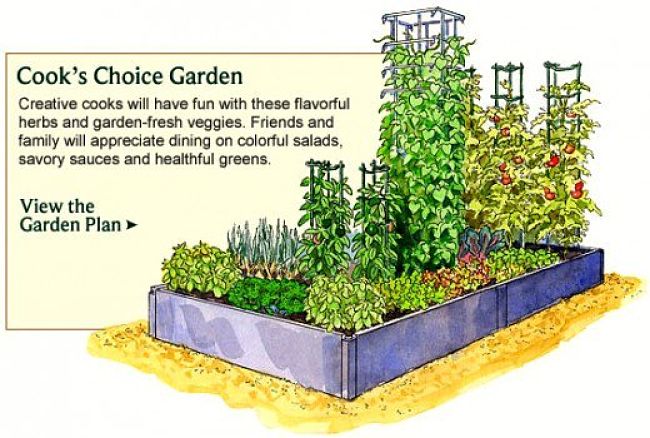
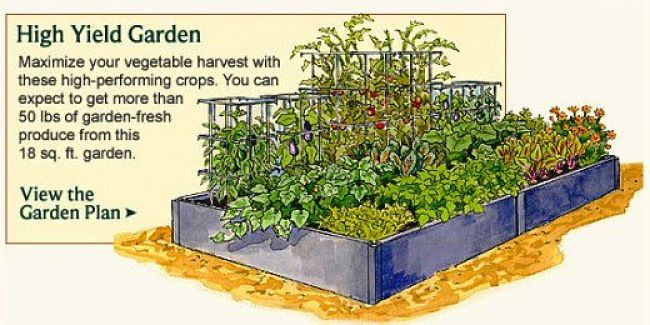
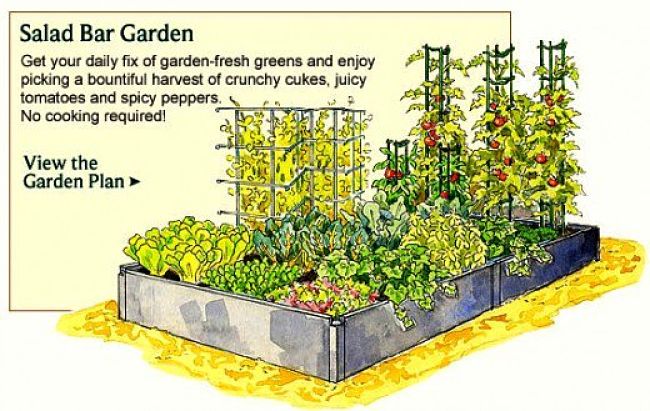
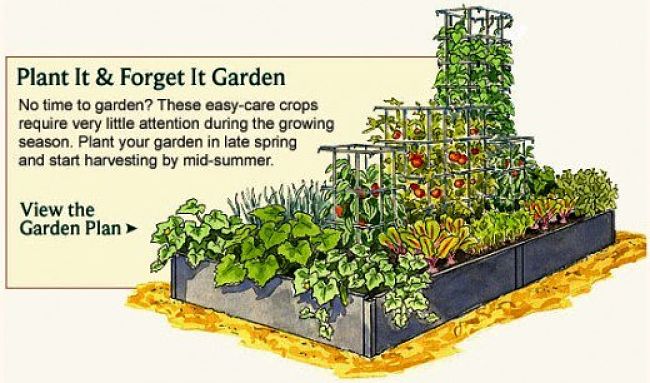
Planting Quantity Guide
|
Crop
|
Spacing of Plants
|
Per Person
|
Family of 4
|
|---|---|---|---|
|
Asparagus
|
1 plant per 1 foot(30cm) row
|
5-10 plants
|
25 plants
|
|
6 foot (2m) row
|
25 ft (8m) row
|
||
|
Beans, Bush
|
2 plants per 1 foot(30cm) row
|
12-15 plants
|
45 plants
|
|
6 foot(2 m) row
|
18 foot (6m) row
|
||
|
Beans, Pole
|
3 plants per pole
|
4 poles
|
3 poles
|
|
Beets
|
Thin to 3 plants per 1 foot(30cm) row
|
20 plants
|
100 plants
|
|
6 foot(2m) row
|
30 feet(10m) row
|
||
|
Broccoli
|
1 plant per 1 foot(30cm) row
|
3 Plants
|
6 plants
|
|
3 foot(1m) row
|
6 foot(2m) row
|
||
|
Brussel Sprouts
|
1 plant per 1 foot(30cm) row
|
3 plants
|
6 plants
|
|
3 foot(1m) row
|
6 foot(2m) row
|
||
|
Cabbage
|
1 plant per 1 foot(30cm) row
|
3 plants
|
6 plants
|
|
3 foot(1m) row
|
6 foot(2m) row
|
||
|
Carrots
|
Thin to 12 plants per 1 foot(30cm) row
|
50 plants
|
150 Plants
|
|
4 foot (1.5m) row
|
12 feet (7.5m) row
|
||
|
Cauliflower
|
1 plant per 1 foot(30cm) row
|
3 plants
|
6 plants
|
|
3 foot(1m) row
|
6 foot(2m) row
|
||
|
Chard
|
1 plant per 1 foot(30cm) row
|
3 plants
|
6 plants
|
|
3 foot(1m) row
|
6 foot(2m) row
|
||
|
Corn
|
1 plant per 1 foot(30cm) row
|
10-15 plants
|
40 plants in blocks
|
|
12 foot (4m) row
|
36 foot (8m) row
|
||
|
Cucumber
|
1 plant per 2 foot(60cm) row
|
1 vine
|
2 vines
|
|
2 bushes
|
4 bushes
|
||
|
Eggplant
|
1 plant per 2 foot(60cm) row
|
2-3 plants
|
7 plants
|
|
6 foot(2m) row
|
12 foot(6m) row
|
||
|
Garlic
|
3 plants per 1 foot(30cm)
|
10-15 plants
|
40 plants
|
|
6 foot (2m) row
|
18 foot (6m) row
|
||
|
Kale
|
3 plants per 1 foot(30cm)
|
3 plants
|
6 plants
|
|
3 foot(1m) row
|
6 foot(2m) row
|
||
|
Lettuce, Leaf
|
Thin to 3 plants per 1 foot(30cm) row
|
24 plants
|
75 plants
|
|
8 foot (2.5m) row
|
26 foot(7.5m) row
|
||
|
Melon
|
1 plant per 6 foot(2m) row
|
1-2 plants
|
4 plants
|
|
18 foot(6m) row
|
36 foot (12m) row
|
||
|
Onion
|
4 sets per 1 foot(30cm) row
|
20 plants
|
60 plants
|
|
12 foot (4m) row
|
18 foot (6m) row
|
||
|
Peas
|
6 plants per 1 foot(30cm) row
|
15-20 plants
|
70 plants
|
|
3 foot(1m) row
|
9 foot(3m) row
|
||
|
Pepper
|
1 plant per 1 foot(30cm) row
|
3-5 plants
|
8-10 plants
|
|
4 foot(1.2m) row
|
8 foot(2.4m) row
|
||
|
Squash, Summer
|
6 plants in 2 Hills
|
6 plants in 2 Hills
|
18 plants in 3 Hills
|
|
4 foot(1.2m) row
|
8 foot(2.4m) row
|
||
|
Turnips
|
1 plant per 1 foot(30cm) row
|
10 plants
|
60 plants
|
|
12 foot (4m) row
|
18 foot (6m) row
|
||
|
Potato
|
1 plant per 1 foot(30cm) row
|
10 plants
|
40 plants
|
|
10 foot(3m) row
|
40 foot(12m) row
|
||
|
Radishes
|
5 plants per foot(30cm)
|
15-20 plants
|
70 plants
|
|
3 foot(1m) row
|
9 foot(3m) row
|
||
|
Spinach
|
4 plants per 1 foot(30cm) row
|
15 plants
|
30 plants.
|
|
4 foot(1.2m) row
|
12 foot(4m) row
|
||
|
Squash
|
1 plant per 6 foot(2m) row
|
1-2 plants
|
3 plants
|
|
2 hills
|
12 foot (4m) row
|
18 foot(6m) row
|
|
|
Tomato
|
1 plant per 2 foot(60cm) row
|
2-4 plants
|
4-6 plants
|
|
6 foot (2m) row
|
12 foot (4m) row
|
||
|
Zucchini
|
1 plant per 3 foot(1m) row
|
1-2 plants
|
4 plants
|
|
6 foot (2m) row
|
12 foot (4m) row
|
Related Articles
=> Allergy Free Garden Design and Tips for Low Allergen Gardening
=> Bee Friendly Garden Designs to Attract and Help Bees
=> 10 Magical Powers of Mulch for Organic and General Gardening
=> How to Turn Lawn into Vegetable Garden, Flower Beds or Wildlife Haven
=> Urban Container Gardening: High and Low Tech Designs and Smart Ideas
=> Wildlife Garden Designs, Plans and Methods
=> Positive Ageing Through Gardening - Role of Technology & Wearable Devices
=> 10 Best Tomato Growing Tips for Gardens and Pots
=> How Gardening is Good Exercise for Keeping Active Prolonging Life
=> Best Tips For New Organic Gardeners - Easy Gardening Ideas, Chemical Free
=> Garden Bed Borders and Edging Ideas for Vegetable and Flower Gardens
=> Start a New Garden by Directly Planting Seedlings into Straw Bales
=> Starting a New Garden the No Dig Way using in-Garden Composting and Potatoes
